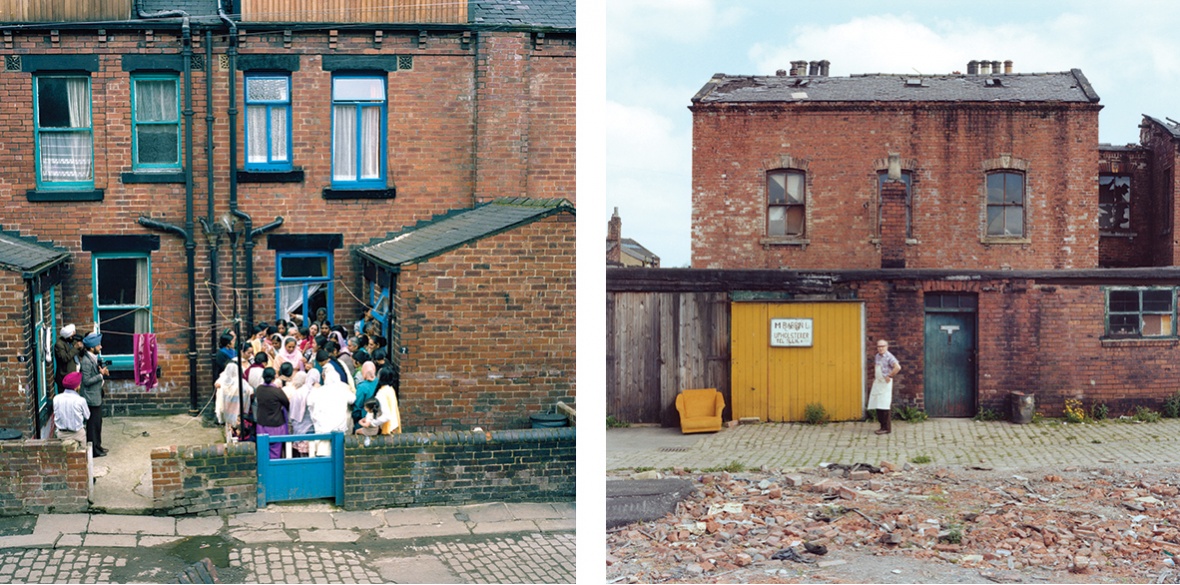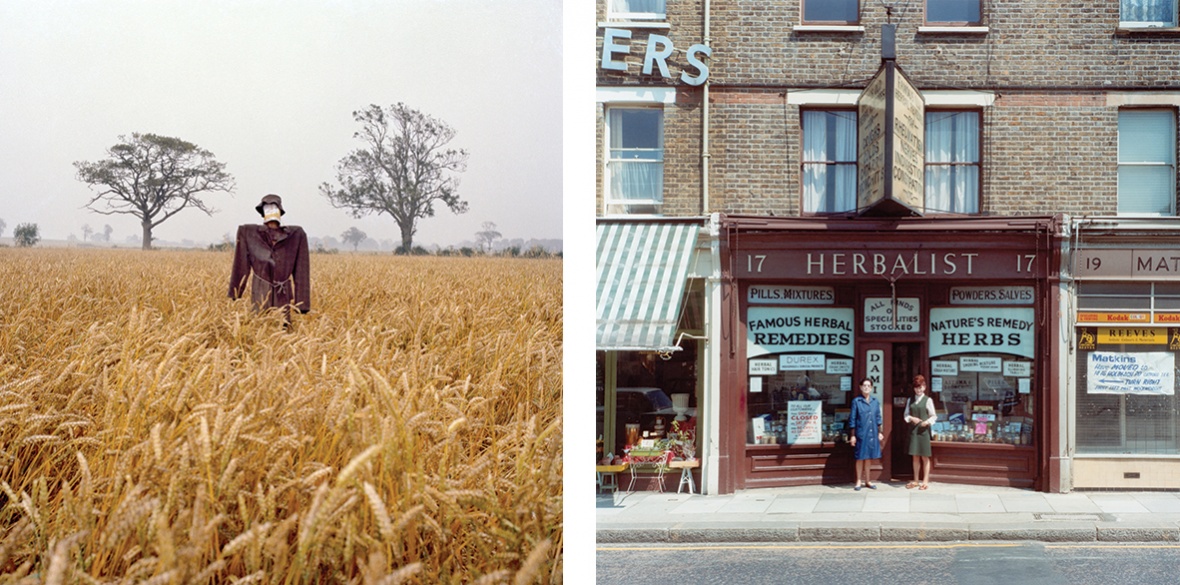This is the last article you can read this month
You can read more article this month
You can read more articles this month
Sorry your limit is up for this month
Reset on:
Please help support the Morning Star by subscribing here
Peter Mitchell: Nothing Lasts Forever
The Photographers’ Gallery, London
PETER MITCHELL (born 1943) is widely regarded as one of the most important early colour photographers of the 1970s and ’80s. This important exhibition is dedicated to his work.
He is a self-effacing artist, coming across in interviews as rather Lowry-like: naive, unideological and uncomplicated. Taking photos, or as he says “taking pictures” is simply a necessity for him.

Born in Eccles, near Manchester, in 1943, shortly afterwards his family moved to Catford, south-east London, where Mitchell spent his formative years. Even as a youngster, he was a keen collector and diarist, beginning the archive that would later form part of his autobiographical publication, Some Thing Means Everything to Somebody.
He left school at 16, moving to Hampstead Heath to begin training as a cartographic draughtsman with the Civil Service. By 24, Mitchell was seeking new challenges and won at place at Hornsea College of Art where he was able to develop his interest in photography and typography. After leaving college, he moved north to look for work, and to begin with work as a truck driver, with photography little more than a hobby.
Nothing Lasts Forever charts Mitchell’s work and career from his early photographs made in the 1970s and ’80s. It combines original documents, archival photographs, oral history, and observations that showcases his unique storytelling abilities.
“I liked the idea of shooting people who had jobs,” he says. There are people standing in front of their homes, premises where they worked, or in front of small shops they run. In his work, he reveals, again like Lowry, a wonderful eye for the ephemeral, the ordinary contained in the oddness. He is a chronicler of change, of that which is about to disappear. Most of his shots, invariably urban landscapes in a square format, look like theatre or film sets. “For me, photography is all about coincidences,” he says.

Mitchell’s photography unfolds a longstanding and poetic relationship with Leeds, where he has lived for much of his life. He has meticulously chronicled its working-class citizens and its urban spaces in the throes of transition with warmth and familiarity for over 40 years. He is a powerful storyteller and social historian and has been described as “a narrator of who we were, a chaser of a disappearing world.”
The demolition of blocks of flats, or old terraced housing, small shopkeepers and landlords, back-streets to eerie scarecrows, his photographs reveal his love, and at times, off-beat vision, of the people and the changing face of their city. He treats his surrounding with a unique sense of care.
Calling himself “a man of the pavement” still today, he regularly walks the streets of inner-city Leeds taking “pictures” of his beloved hometown.
This exhibition includes rarely seen works from Mitchell’s own collection, personal ephemera and found objects. It is almost impossible to select single images from this collection, as each imparts a special and unique insight and emotion, but I will mention three that I particularly like.
How many Aunties, Back Hares Mount, Leeds, (1978) shows a Sikh celebration, with the extended family crammed into the tiny back yard space of one of those 19th-century terraced houses, and is viewed from an upper window of a house opposite. The colourful and exotic clothing of the family presents a stark visual contrast to the soot-engrained bricks of the tiny houses and the grey, unruly cobblestones of the road.
The people of Kingston Racing Motors, Olinda terrace, Leeds (1975) shows a group of young motorbike enthusiasts in front of a soon to be demolished house, its back wall adorned with a fading mural of a man on a racing bike, and a girl in a fur coat, leaning against an ancient Volkswagen beetle completes the image. Again, there is a naturalness about this image, as if Mitchell had just stumbled across the group by accident (maybe he did?) but at the same time it also has a theatrical quality.
Max Babbin, Vulcan Street, Leeds, (1979) shows Mr Babbin, an upholsterer, in his apron, as if caught unawares, behind his workshop, still holding its own in a landscape of demolition. The foreground is composed of heaps of broken house-bricks; a yellow armchair sits incongruously alongside the bright yellow gateway to his yard, while the rickety workshop itself still stands proudly, like a monument to an ancient civilisation.
Even the colours of Mitchell’s images have a kind of soft, faded quality about them, lending them an aura of impermanence. His images present us with a mournful but loving visual epitaph to a city and its inhabitants he has grown to love and respect.
Well worth a visit.
Runs until June 15. For more information see: thephotographersgallery.org.uk











